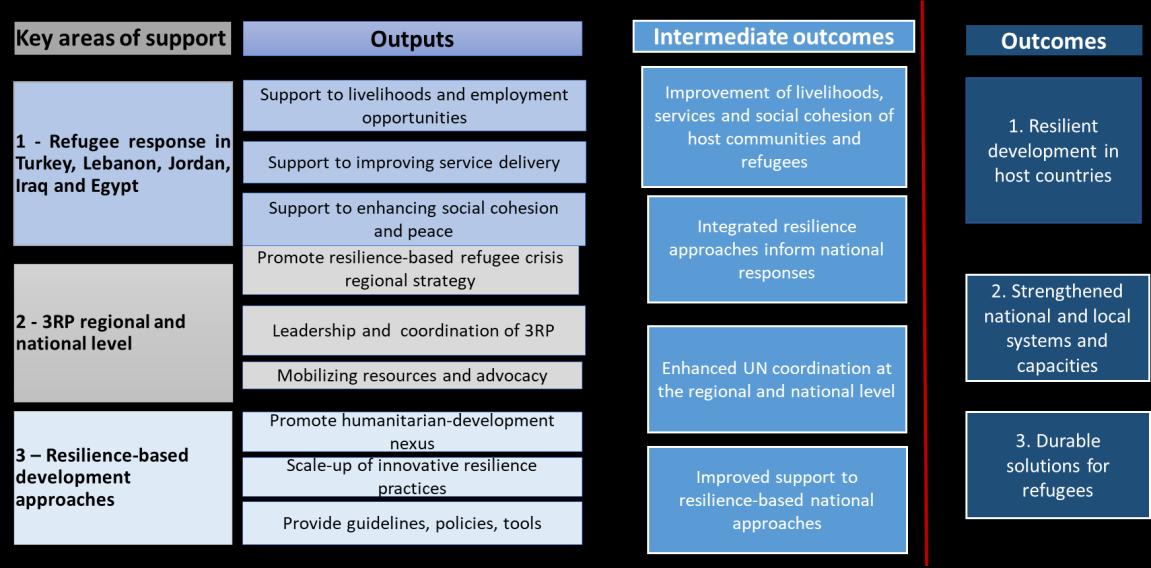CHAPTER 3. THE UNDP RESPONSE This chapter provides a brief overview of UNDP support to refugee response during the period 2014-2019. This focuses on the support to the Syrian refugee crisis, while also recognizing UNDP responses to the Lake Chad Basin, Rohingya and Venezuela refugee crises.
3.1. UNDP strategic response to refugee crises UNDP has over the years supported refugee crisis response as part of its development and conflict prevention and response programmes. The Syria refugee response in many ways was a turning point for UNDP. In this instance, UNDP programme strategies underscored the development aspects of the crisis. Direct engagement was seen to be necessary to address the development consequences of displacement and offer durable solutions for refugees. Another compelling factor for the shift in UNDP engagement was a reorientation in the international discourse since the adoption of the SDGs, placing development in the centre of international refugee response. The World Humanitarian Summit and New York Declaration that followed argued for a more coherent approach by improving linkages between humanitarian approaches and longer-term development goals. UNDP support to refugee response is guided by these intergovernmental agreements. The UNDP Strategic Plan, 2018-2021 explicitly recognized displacement as an emerging issue for which specific signature solutions could be developed in partnership with relevant agencies.47 The Strategic Plan, 2018-2021 emphasized support to conflict- and disaster-related displacement, particularly engagement in early recovery and addressing development dimensions of displacement. It acknowledged the need for “assistance for better planning and coordination of early recovery and transition, ensuring that local planning processes are inclusive of and accountable to displaced populations, women and other excluded groups […] relying on early local economic recovery, employment and livelihoods stabilization and creation and reintegration (particularly for IDPs and returning refugees).” The Strategic Plan made explicit references to stabilization interventions, encouraging a more integrated and holistic approach to resilience. It thus builds upon the resilience-based development approach and the stabilization approach, noting that UNDP work on crisis response and recovery (including early recovery) was expected to “help ensure that responses by humanitarian actors are complemented by a developmental focus to ensure a rapid return to sustainable development pathways, within the framework of country ownership and leadership”. The previous Strategic Plan, 2014-2017 did not explicitly prioritize support to refugee response although broadly considered it as part of conflict-related displacement and response. Responding to the scale and protracted nature of the Syrian crisis required agencies to rethink their collective development and humanitarian responses and to act beyond their traditional mandates. In this context, the UNDP resilience-based development approach was formulated to support communities and institutions to respond to increased demand and pressure (“coping”), promote household recovery from the negative impacts of the crisis (“recovering”) and strengthen local and national economic and, social systems to protect development gains from current and future shocks (“transforming”). The resilience approach aimed to address multiple dimensions of the crisis and, as pointed out in many evaluations, the focus on the concept of resilience was a concrete effort to create greater linkages between humanitarian
47
In the Strategic Plan, 2018-2021 along with eradicate poverty in all its forms and dimensions and accelerate structural transformations for sustainable development.
39



